
Filter News
Area of Research
- Advanced Manufacturing (6)
- Biological Systems (6)
- Biology and Environment (4)
- Building Technologies (1)
- Clean Energy (72)
- Climate and Environmental Systems (3)
- Computational Biology (2)
- Computational Engineering (1)
- Computer Science (9)
- Energy Sciences (3)
- Fusion Energy (6)
- Materials (62)
- National Security (5)
- Neutron Science (25)
- Nuclear Science and Technology (11)
- Quantum information Science (3)
- Supercomputing (41)
- Transportation Systems (3)
News Type
Date
News Topics
- 3-D Printing/Advanced Manufacturing (15)
- Advanced Reactors (7)
- Artificial Intelligence (12)
- Big Data (7)
- Bioenergy (9)
- Biomedical (5)
- Biotechnology (1)
- Clean Water (5)
- Climate Change (1)
- Composites (2)
- Computer Science (35)
- Cybersecurity (5)
- Energy Storage (8)
- Environment (19)
- Exascale Computing (2)
- Frontier (2)
- Fusion (5)
- Grid (5)
- Isotopes (1)
- Machine Learning (5)
- Materials Science (20)
- Mercury (1)
- Microscopy (5)
- Molten Salt (1)
- Nanotechnology (6)
- Neutron Science (18)
- Nuclear Energy (17)
- Physics (6)
- Polymers (2)
- Quantum Science (10)
- Security (2)
- Space Exploration (4)
- Summit (9)
- Sustainable Energy (8)
- Transportation (12)
Media Contacts
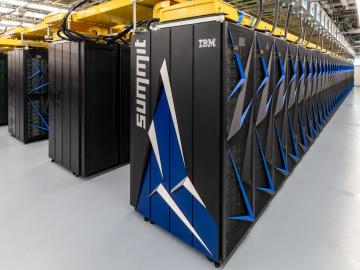
This round-up of ten of the most-read news stories from Oak Ridge National Laboratory in 2019 showcases the diversity of the lab’s scientific and engineering research portfolio.
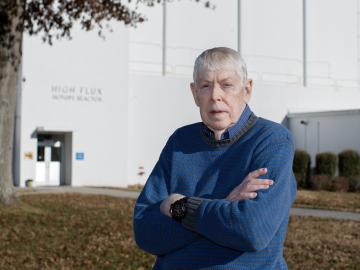
George Flanagan, a nuclear engineer at the Department of Energy’s Oak Ridge National Laboratory, didn’t get to relax much between 1987 and 1990.
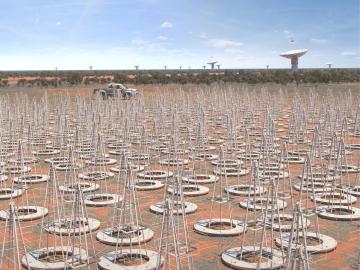
For nearly three decades, scientists and engineers across the globe have worked on the Square Kilometre Array (SKA), a project focused on designing and building the world’s largest radio telescope. Although the SKA will collect enormous amounts of precise astronomical data in record time, scientific breakthroughs will only be possible with systems able to efficiently process that data.
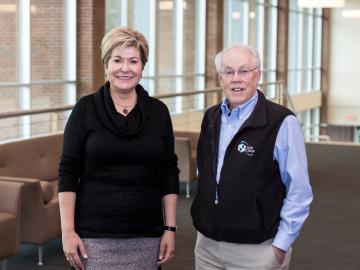
Gina Tourassi has been appointed as director of the National Center for Computational Sciences, a division of the Computing and Computational Sciences Directorate at Oak Ridge National Laboratory.
Ancient Greeks imagined that everything in the natural world came from their goddess Physis; her name is the source of the word physics.
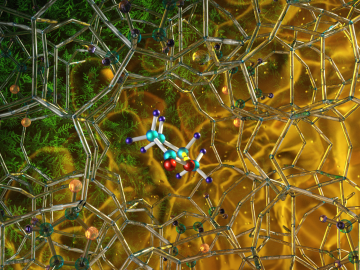
Illustration of the optimized zeolite catalyst, or NbAlS-1, which enables a highly efficient chemical reaction to create butene, a renewable source of energy, without expending high amounts of energy for the conversion. Credit: Jill Hemman, Oak Ridge National Laboratory/U.S. Dept. of Energy
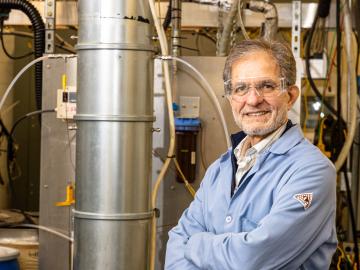
While Tsouris’ water research is diverse in scope, its fundamentals are based on basic science principles that remain largely unchanged, particularly in a mature field like chemical engineering.
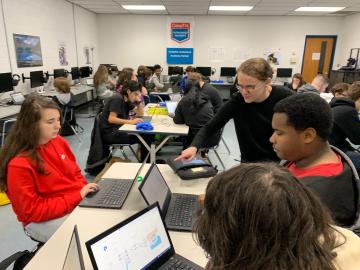
ORNL computer scientist Catherine Schuman returned to her alma mater, Harriman High School, to lead Hour of Code activities and talk to students about her job as a researcher.
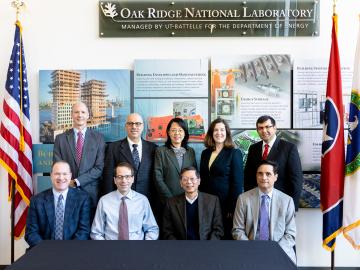
OAK RIDGE, Tenn., Dec. 12, 2019 — Oak Ridge National Laboratory and five leading building equipment industries will collaborate to improve the energy performance of heating, air conditioning and ventilation systems and investigate climate-friendly alternative refrigerants.

Oak Ridge National Laboratory hosted a collaboration workshop Nov. 19-20 with faculty and students from 14 historically black colleges and universities and Hispanic-serving institutions, including Spelman College in Atlanta, Howard University in Washington, D.C., and Florida International University in Miami.


